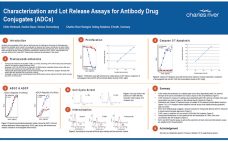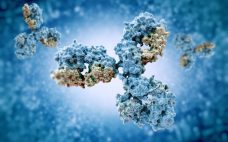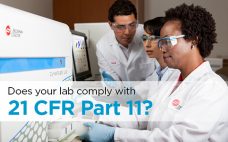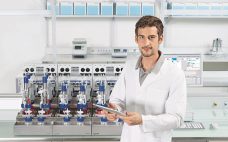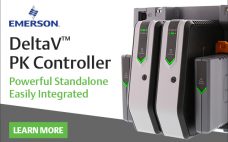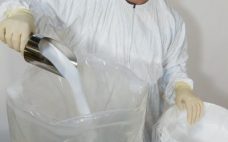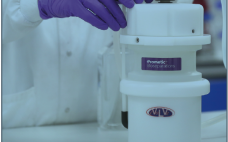Antibody-drug conjugates (ADCs) add an additional level of challenge to testing of biotherapeutics. Besides the antibody, which needs to be evaluated for potential and known mechanisms of action (MoA), there is a cytostatic compound conjugated that alters the behavior of the antibody-vehicle within the typical assays. Therefore, characterization of new innovators as well as biosimilarity assessment is even more challenging than it is for antibody therapeutics. Using the example of Trastuzumab emtansine, Charles River has set up a panel of…
BPI White Papers
Keeping Host Cell Protein ELISAs Covered
Biological drugs (or biologics) are manufactured by living systems such as microorganisms, and plant and animal cells. Cell lines, like Chinese hamster ovary (CHO), can be engineered to work as cellular factories to produce biologics in addition to their own biological molecules. Host cell proteins (HCPs) are biological by-products of these cellular factories. They are one of the main impurities in harvested cell culture fluid (HCCF), and tend to be released when the cells die or are damaged. These HCPs…
Flow Cytometry News: Does your lab comply with 21 CFR Part 11?
21 CFR Part 11 refers to the section in the Code of Federal Regulations (CFR) that sets forth the United States Food and Drug Administration’s (FDA) guidelines on using electronic records and electronic signatures. Chapter 21 covers all regulations pertaining to GCP (Good Clinical Practice), GLP (Good Laboratory Practice) and GMP (Good Manufacturing Practice), relating to the pharmaceutical and healthcare industries. Part 11 covers all FDA regulated issues pertaining to electronic records and electronic signatures. All computer systems that store…
The Challenge of Building Better, Lower Cost Biologic Drugs Faster
A critical factor for both the lowering in costs of development as well as costs of production for biologic therapies is to develop a cell line that grows faster and produces larger amounts of vaccines and drugs using low cost synthetically defined media. Dyadic’s industrially proven C1 gene expression platform creates a stable cell line in a shortened timeline, reducing the time from gene fragment to stable cell line by 50% when compared to CHO cells. C1 stable cell lines…
Culture of 3D Cell Aggregates in Perfusion in a DASbox® Mini Bioreactor System
Three-dimensional (3D) cell aggregates are of great interest for many applications, including disease modeling, drug toxicity assessment, and manufacturing of stem cell-based products. Stirred-tank bioreactors are promising culture systems for 3D cell aggregates, as they allow efficient establishment and maintenance of cell aggregates, process monitoring and control, and process scale-up to larger volumes. Furthermore, they can be operated in perfusion mode, which allows 3D cell aggregates to be sustained longer than in traditional batch cultures. Researchers at the Instituto de…
Optimizing Unit Operations In Biopharmaceutical Manufacturing
There are many critical material-handling challenges regarding flow rates, pressure levels and the prevention of shear in the chromatography, virus filtration and TFF processes that are used in the manufacture of biopharmaceuticals. In order for these unique operations to be implemented successfully while handling fluids that can be sensitive, delicate and expensive, the operator must be aware of their specific operating characteristics and choose a pumping technology that can meet the strict demands for successful operation. While lobe and peristaltic…
The DeltaV™ PK Controller: Powerful Standalone — Easily Integrated
The PK Controller brings ground-breaking innovation and technology that is powerful standalone for small units and easily integrates into a plant-wide DCS. With faster logic execution, built-in native Ethernet ports and native device protocols, the DeltaV™ PK Controller addresses a wide variety of applications and system sizes. The fit-for-purpose controller enables you to have a single native database and system allowing you to shorten project schedule and accommodate late changes. What is Powerful Standalone? Operate and configure your standalone applications…
EZ BioPac® Powder Transfer Gets Your Biologic to Market Faster, with Less Risk
This whitepaper quantifies how one simple change can drastically reduce the time it takes to get biologics manufactured. Getting media and buffer into large-scale, continuous bioprocessing has been burdensome, time consuming and messy. Upgrading to modern single-use powder handling in your process gets your product to market without time wasted on complicated weigh and dispense steps, cleaning validations, or worries about powder in the air and in the room.
Directed Differentiation of cGMP Compliant Human Induced Pluripotent Stem Cells Into Clinically Relevant Specialized Cells From All Three Germ Layers
The generation of human induced pluripotent stem cells (iPSCs) via reprogramming technology represents a major breakthrough in personalized medicine and the treatment of degenerative diseases. This is mainly because the iPSCs can be expanded in culture and then differentiated into specialized cell types that can be used for clinical applications. Patient-derived iPSCs can be used to model human genetic diseases, produce clinically relevant differentiated cells that display disease pathogenesis, or generate specialized cells through directed differentiation process for autologous cell…
Removal of Endotoxins – From Bench to Process Scale
Endotoxins or lipopolysaccharides (LPS) are highly toxic components of the cell wall of Gram-negative bacteria, which are often present in significant amounts in bacterial cell expression systems such as E.coli. A number of methods have been adopted for the removal of endotoxin based on adsorption, in particular ion exchange chromatography. Although downstream processing can significantly reduce endotoxin levels in the product, efficient and cost effective removal of residual endotoxin from biopharmaceutical preparations remains a challenge. Prometic Bioseparations have developed an…

